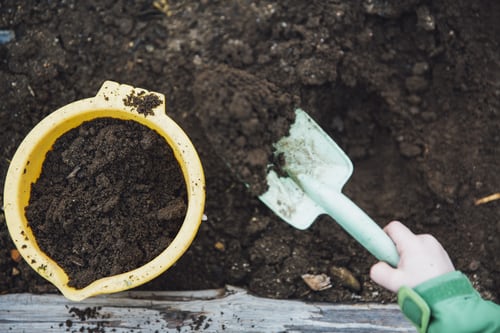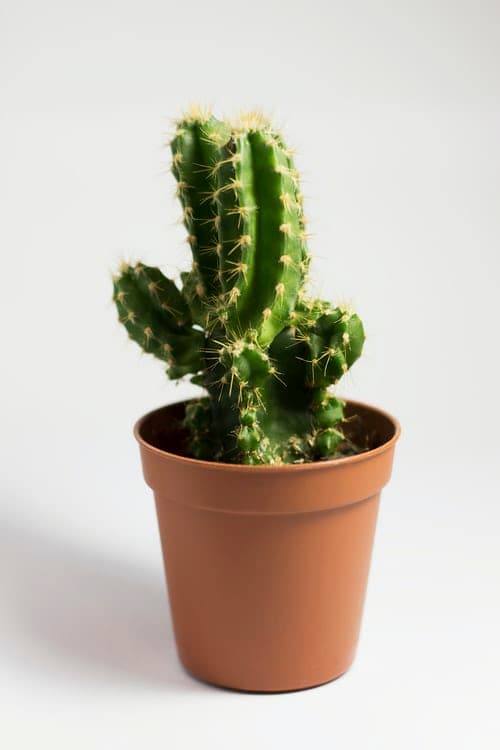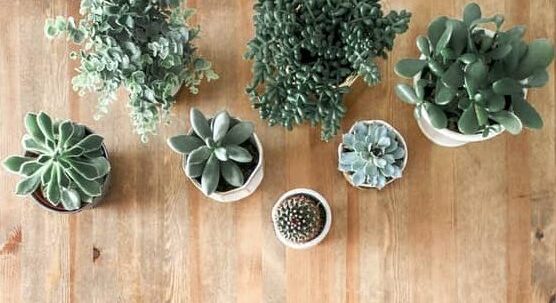Succulents are known for their unique appearance and vibrant shades of colors. They are available in a variety of different forms and shapes.
- In this post, we have discussed 5 awesome succulents that look exactly like corals, and planting these succulents will help in enhancing the ambiance of your home.
Table of Contents
Euphorbia tirucalli
Country of Origin: South Africa and India
- Interesting Fact: Popularly called as Firesticks and Pencil cactus.
Key points:
- Firesticks are known for their striking looks that are bound to turn heads.
- They are well adapted to neglect and well suited for people with a busy schedule.
- Firesticks take time to grow and they keep on growing. Eventually, they can be pretty tall(about 6-9 feet tall in a pot).
- They hate overwatering and so be very very careful about the watering schedule and only water when soil is really dry.
How to Care Pencil Cactus:
- Use gloves, glasses, and long sleeves while taking care of the plant.
- Always grow them in cactus mix soil that has great drainage.
- Keep on trimming them or using stem cuttings for newer growth in order to keep it in shape. The plant can get really big without trimming.
- They don’t like winter at all so you have to bring them inside during winter.
- The easy way to propagate firesticks is by stem cuttings.
- They love sunlight and you need to place it at a location that gets enough sunlight throughout the year. It is one of those succulents that can survive outside even in full sun.
- Only water them when the soil looks really dry, otherwise watering once in 14 days in summer will be sufficient. Water a bit less frequently in winter.
Is the Firestick Plant Poisonous?
The plant is toxic in nature so you need to take care while handling it…despite its fiery looks…Its white sap particularly poisonous and can give a burn like feeling in touch. On contact with eyes or when ingested, it can be extremely fatal. So always use sufficient protection (Source)
- If you have children around the house, its best to avoid this plant.
- If you have a dog and cats of curious nature then place the succulent at a location out of their reach or plant them outside in the garden.
Rhipsalis cereuscula
Country of Origin: Brazil
- Interesting Fact: Often termed as coral cactus.
Key points:
- Has a distinguishable appearance perfect for an indoor arrangement.
- They can be grown outside as well but they don’t prefer direct sunlight, so keep them under a shade.
- Rhipsalis cereuscula are not frosting tolerant as well. Hence they can be regarded as an ideal succulent to be grown indoors.
- They grow actively in summer and are dormant in winter.
- Can be around 60 to 70 cm long.
- They are perfect for a hanging basket and their extensive growth gives them a lovely appearance.
How to Care for Rhipsalis cereuscula
- Require lower sunlight so preferably keep it in a room that gets bright light. However, do not keep it in balconies or windows that get direct sun. They like the filtered sun.
- They don’t die off easily and can be very easily propagated by stem cuttings
- Only water the plant when the soil feels dry. They have low watering needs.
- Use cactus mix and for propagation use stem cuttings.
Also, Read:
Senecio mandraliscae
Country of Origin: South Africa
Common Names: Blue Chalk Sticks, Blue finger
Interesting Facts:
- They have finger-like pencil-shaped projections of fleshy leaves that provide them their unique look.
- They produce flowers at the top of the leaves, the scene looks really marvelous.
Key points:
- Grows about 45 cm tall.
- The flower color can be white or can have a little bit of bluish touch.
- They actively grow during the summer and so the bloom time is typically in the hotter months
- They cannot tolerate cold so you need to move them inside during winter if your place gets pretty lower temperatures (keep them above 12 degrees Celsius).
How to Care for Blue Chalk Sticks
- Keep the watering schedule moderate during the fall and spring. Increase the frequency a little bit during summer however still stick to the soak and dry approach.
- Water once in 20 to 24 days in winter as overwatering will lead to root rot. They are not cold hardy to bring them indoors during winter.
- Whenever you water make sure to drench the plant till water comes out of the drainage holes. Dont hold back.
- Blue chalk sticks dont have a high need for fertilizers. If you wanna use fertilizers do it before the summer season and use a well-balanced slow-release fertilizer and dilute it several times before applying it on the soil.
- Prune them once a year preferably before the growing season to keep them in the proper shape.
Sedum rubrotinctum
Country of Origin: Mexico
- Other names: Christmas cheer
Interesting Fact:
- Commonly termed as Jelly bean plants cause of their jelly bean-like shaped leaves which are green in color and red around the edges.
Key points:
- Sedum rubrotinctum Produces yellow flowers during spring and summer.
- Sedums are always easy to propagate and their overgrowth kind of appearance makes them really unique. Even you can find dropped off leaves are developing their own roots on the pot!
- If you want them to turn red especially around the edges you need to keep them under steady sunlight. They can tolerate direct sun and you can keep them outside or on the balcony or near a window of a room that is south faced i.e, gets a lot of sunlight
- They drop off leaves more frequently than other succulents so as long as they do not feel mushy or soft and the plant doesn’t show any symptoms of being overwatered or underwatered you have nothing to think about
How to take care of Sedum rubrotinctum:
- Go with a soak and dry method with this one as well and generally you can water once in 8 to 12 days during the growing months.
- They do well even under shade however if you want their vibrant colors to show you need proper sunlight
- They can tackle cold winters if your place gets moderate low temperatures however under extremely cold conditions bring them inside for safety (below 9-7 degrees Celcius).
- Can be a little bit toxic for humans as well as animals
Also Read: How do Cactus store Water?
Crassula ovata Coral
Country of Origin: Namibia and South Africa
- Other names: Shrek’s ears, Finger plants.
Interesting Facts:
- They have a unique waxy white coating on their leaves
- Crassula ovata coral has a distinct underwater coral touch and feels like it has directly come out of the oceans!
- They have simple green colored stems that look like closed off tubes. This is a special feature of this particular form of crassula ovata.
- Will look extremely distinct in the middle of your garden or in your balcony.
- The tips of the tube-shaped stems can turn red when kept outside directly under the sun
- Have white flowers that are star-shaped.
Key points:
- Little susceptible to pest manifestations
- They don’t do well with frost however they can tolerate mediocre frost levels of being in temp of around 6-degree Celcius.
- They can grow up to 12 inches long and is a perennial plant
- Can be propagated via leaf cuttings.
How do you Care for Crassula ovata coral:
- They need little care and grow quite slowly.
- Does off well with indirect sun and cactus mix soil.
- Water them once in a while when the soil is dry.
- Not cold hardy, should not be kept below temperatures of (5-10)degree Celcius (Zone 10a to 11b plant).
- Little bit susceptible to pests and fungal gnats. Never overwater as they are extremely sensitive to damp soil and to root rot.
- They are considered as toxic for animals and humans when ingested (Source).

Basic caring Tips for all these succulents that look like corals:
Sunlight:
- Most of these succulents prefer indirect sun rather than full sun as that can damage the plant. So always grow them under a shade in the garden or if indoors then beside a window or in the balcony that just gets filtered bright light all day.
Watering:
Succulents are habituated to grow in drought-prone areas so these plants can adapt with underwatering but not with overwatering. Only water them when the soil is dry. You can use your fingers or can use a moisture meter. When in doubt do not water.
Pots:
- In case your place gets a prominent rainy season or extreme chilly months then it is best to grow succulents in pots. You can bring them inside during harsh conditions.

- Use terra cotta pots with drainage holes at the bottom instead of plastic ones. They absorb water from the soil. Succulents hate damp soil so drainage holes will help in getting rid of water faster. If grown indoors keep the pot over a small tray and get rid of the excess water later on.
Read: Can you plant Succulents in Mason jars or Glass Containers?
Soil:
- Always use cactus mix soil for growing succulents. This is their most prominent requirement. You can also prepare your own potting mix by mixing equal amounts of potting soil with sand, pumice, pebbles, volcanic rocks. Succulents can only grow in drainage friendly soil.
- If you wanna make your own mixture then Use coarse sand instead of beach or construction sand and store-bought potting soil instead of garden soil.
Propagation:
- Most succulents can be propagated via both leaf and stem cuttings.
- When plucking the leaves Make sure the leaf is not damaged and has got the base intact. You can use fallen leaves but again make sure they are healthy.
- For stem cuttings use a sterile scissor and cut it obliquely so that you can easily plant the pointed end in the soil. Always try to make a clear cut.
- Let it heal for a few days. Then plant it in a new pot with a cactus mix. Mist the soil from time to time when dry.
- You will see new roots coming out in a few weeks.
Repotting:
- Repotting is essential in case the succulent is showing symptoms of root rot or the drainage system of the soil is improper.
- Even without any issues, repotting the succulents in new soil after every two years is a healthy practice.
Conclusion
These 5 succulents not only looks like corals but also are extremely low maintenance. Provide them with their basic needs and water from time to time and they will do just fine.
Also Read:
- Succulent Bonsai: What is a Bonsai & How to Make them?
- 7 Gorgeous Succulents for Balcony You” ll Wish You”d Known Sooner
So which one out of these is your favorite? Let me know by commenting below!
Cheers…
